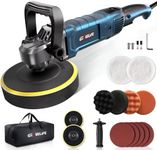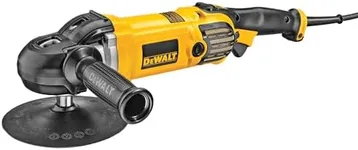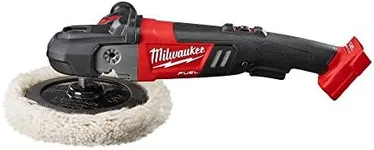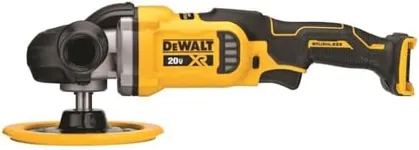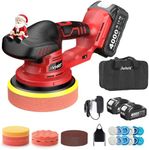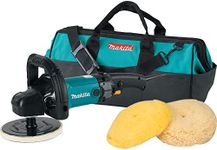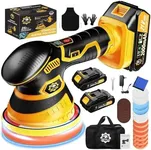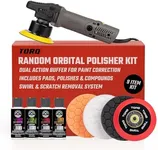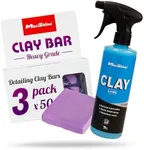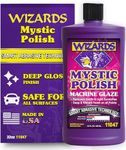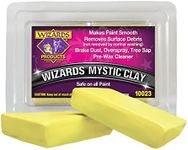Buying Guide for the Best Boat Polisher Buffer
Choosing the right boat polisher buffer can make a significant difference in maintaining the appearance and longevity of your boat. A good polisher buffer will help you remove oxidation, scratches, and other imperfections from your boat's surface, leaving it looking shiny and new. When selecting a boat polisher buffer, it's important to consider several key specifications to ensure you get the best fit for your needs. Here are the key specs to look out for and how to navigate them.Power (Amps or Watts)The power of a boat polisher buffer is measured in either amps or watts and indicates the strength of the motor. A higher power rating means the buffer can handle tougher jobs and work more efficiently. For light polishing and maintenance, a lower power buffer (around 5-7 amps or 500-800 watts) may suffice. For more demanding tasks, such as removing heavy oxidation or deep scratches, a higher power buffer (above 7 amps or 800 watts) is recommended. Consider the condition of your boat's surface and the type of work you'll be doing to determine the right power level for you.
Speed (RPM)The speed of a polisher buffer is measured in revolutions per minute (RPM). Variable speed buffers allow you to adjust the speed to suit different tasks. Lower speeds (around 600-1500 RPM) are ideal for applying wax and polishing, while higher speeds (1500-3000 RPM) are better for cutting and compounding. If you need versatility, look for a buffer with a wide range of speed settings. For general use, a buffer with a speed range of 600-3000 RPM should cover most needs.
WeightThe weight of the polisher buffer can affect how easy it is to use, especially for extended periods. Lighter buffers (around 4-6 pounds) are easier to handle and maneuver, making them suitable for smaller boats or less intensive work. Heavier buffers (above 6 pounds) may offer more stability and power but can be tiring to use for long durations. Consider your physical strength and the size of your boat when choosing the weight of your buffer.
Pad SizeThe pad size of a polisher buffer determines the area it can cover in one pass. Common pad sizes range from 5 to 7 inches. Smaller pads (5-6 inches) offer more precision and are easier to control, making them ideal for detailed work or smaller boats. Larger pads (7 inches) cover more area quickly, which is beneficial for larger boats or when working on broad surfaces. Choose a pad size that matches the scale of your boat and the type of work you'll be doing.
ErgonomicsErgonomics refers to how comfortable and easy the polisher buffer is to use. Look for features like adjustable handles, soft grips, and balanced weight distribution to reduce fatigue and improve control. A well-designed buffer will make your polishing tasks more enjoyable and less strenuous. If you plan to use the buffer frequently or for long periods, prioritizing ergonomics can make a big difference in your overall experience.
DurabilityDurability is an important factor to consider, especially if you plan to use the buffer regularly or for heavy-duty tasks. Look for buffers made from high-quality materials with robust construction. Features like sealed bearings and dust protection can extend the lifespan of the tool. Reading reviews and checking for warranties can also give you an idea of the buffer's reliability. Choose a durable buffer to ensure it can withstand the demands of your polishing tasks over time.
